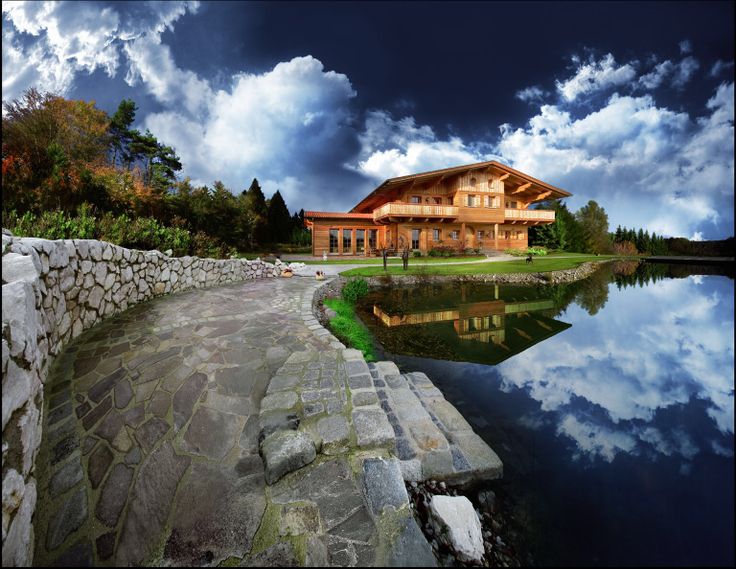|
In the spirit of technical advancement, the relationship between human beings and building materials is defined by numbers and patents. Today, many wood workers only work with standards and regulations. I am not demonizing all norms and regulations here; however, it simply is erroneous and destructive to reduce our relationship with trees to numbers and regulations. Sorting out and grading the quality of building wood by counting the branches of the trees doesn't result in buildings which last for centuries. A practical example are the trade laws, norms and standards which regulate the wood industry. They grade by the exact numbers and size of branches in a board or beam. Our experience however shows that the amount of branches is one of the least criteria which contribute to quality. For our winter gardens and glass facades we fit large glass panels of solid untreated timber beams. Those beams ave to be absolutely steady. If there is any movement as through cracking or warping, the glass would shatter. The largest glass panels we ever installed were about 5 meter high thermal glass panels in one piece. These panels are still intact even after many years and have amazed quite a few. It would be extremely difficult for us to achieve the required qualities (like durability and stability) by solely relying on industry norms. These regulations don't say anything about the right selection or the right time for harvesting trees. They do not mention the markedly different qualities of juvenile and mature trees. There is no comparison between wood drying naturally slow and super-fast kiln drying. We have used beams which have up to 10cm 'splay knots' to support large glass panels. According to standards, these beams are of low grade. However, they have performed perfectly for many years and they will do so for generations to come. Branches are the organs of a tree and are a big part of the wood story. For the winter garden I could have used an industrial 'high grade' wood without any knots. It could have grown in an unnatural monoculture, harvested while still juvenile, in the middle of a growth spurt and dried fast in a kiln. The wood would have been sprayed against the bark beetle and possibly been dipped into fungicide. This wood would be perfectly graded and comply with all standards. Nevertheless, I would not use wood that has been so badly mistreated to build a winter garden but be very concerned about the possibility of glass panels breaking, and the wood's low resistance to insects and fungi as well as toxic residues. Nothing ever benefits from fanaticism, pretension and narrow-mindedness. To live in harmony with nature has to do with true appreciation and consideration and the same goes for wood as well.
0 Comments
Leave a Reply. |
AuthorHolz100 Canada Inc. Archives
July 2019
Categories
All
|
HoursMon - Fri.
9:30am - 4:30pm |
Office |
President FRANK GHAHREMANI(416) 725-6747
|


 RSS Feed
RSS Feed


